Pipe dope, also known as pipe thread compound, is a type of sealant that is used to create a watertight seal on threaded pipes.
While pipe dope is effective at sealing pipes, it can also be difficult to remove if you need to make repairs or replace a section of piping.
Whether you are a DIY enthusiast looking to make repairs around the house or a professional plumber seeking to improve your skills, this post will provide valuable information to help you remove pipe dope confidently.
Using the compound, you can seal the coupling to prevent gas from escaping through the joint.
Gas may escape if the coupling isn’t tightened enough to the pipe thread, or the thread hasn’t been plated enough with the compound.
The pipe needs to be removed from the coupling and the threads thoroughly cleaned to apply more compound.
Is Pipe Dope Permanent?
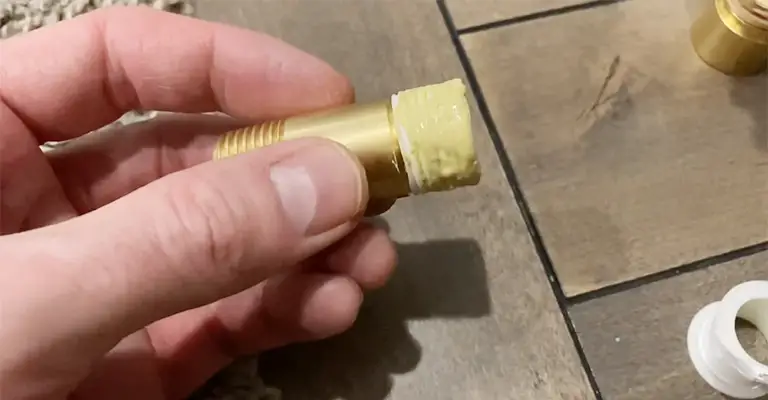
Pipe joint compound or pipe dope is more durable than pipe thread sealant, another commonly used item. In addition to being known as pipe glue or PVC glue, the first type is also known as PVC glue.
Putty-like in consistency; it works like an adhesive. The most common colors are clear or white, but you may also find them in other colors. Sealants are used on pipes and fittings to prevent leaks.
After the glue has cured, it dries and provides an airtight seal, which is crucial for gas supply lines. For permanent use, pipe dope is more popular among professionals because it is strong and durable.
The pipe dope can still be removed if the joint has a problem. Pipe dope isn’t something that can be permanently affixed to pipes.
How to Remove Pipe Dope: A Step-by-Step Guide
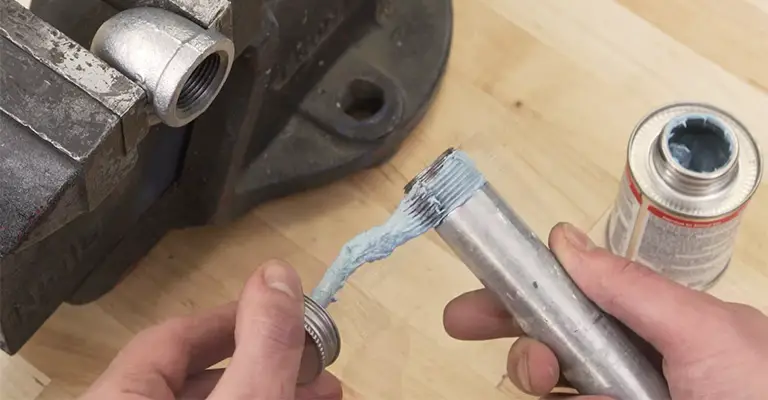
As part of this section, we will provide step-by-step instructions on removing pipe dope, as well as tips and techniques to make it as efficient and effective as possible.
Step 1
Using a water spray bottle, add some soapy water to it. Gas pipeline coupling joints need to be sprayed with water. You can check for bubbles at the seams between the couplings and the pipe.
There is a possibility that gas is escaping from the coupling if bubbles are present. Turn off the gas supply at the gas meter and mark the leaky coupling with duct tape.
Step 2
The crescent wrench is used to loosen and remove the gas supply hose nut attached to the gas shut-off valve at the end of the gas supply line. An appliance with a gas connection is connected to the other end of the hose.
Using a pipe wrench, loosen and remove the valve from the gas line by turning the wrench counterclockwise.
Step 3
Close the coupling on the first section of the gas line by placing the wrench around it.
As you turn the wrench counterclockwise, the pipe section will loosen and be removed from the coupling. Using the same method, loosen and remove the coupling.
You must continue removing all pipes and couplings until you reach the marked leaking coupling. Couplings that leak need to be removed.
Step 4
Put a rag around the threaded end of one piece of gas pipe that has been removed.
With one hand, hold the rag firmly around the thread and turn the pipe counterclockwise several times with the other to remove the threading compound.
You will need to repeat this process until the compound has been removed. To remove all remaining compound remnants from the pipe thread, brush thoroughly around it with a steel brush.
Ensure all removed gas pipe sections are cleaned of the compound by following the same procedure.
Different Ways to Remove Pipe Dope
In the case of faulty joints that leak gas or if you are replacing the existing gas line, you will need to remove the existing pipe dope.
Have you ever done that before? Here are three steps you can follow to remove threading compounds.
1. Removing Old Pipe Dope
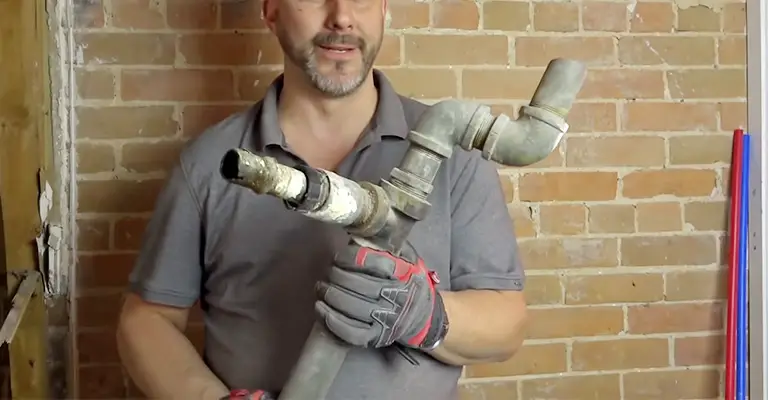
For your convenience, we have listed three ways you can achieve your goal. Make your decision according to what works for you.
Using a Pipe Wrench and a Rag
You’ll only need a pipe wrench, rag, and soapy water solution. Prepare them.
Find out if there are leaks by spraying soapy water on the joints. It is not necessary to do this step if you already know where they are located.
Once you have turned off the gas, you will need a pipe wrench to loosen the pipe joint. Don’t break or bend the pipe unless you need to exert some force.
Once the pipe dope has been exposed, take the rag and hold it tightly against the dope.
The pipe should be grasped firmly with both hands. Twist it outwards. A large chunk of pipe dope may require several attempts to remove.
For a completely clean, scrub the end with a wire brush if any threading compound remains.
Using Nail Polish Remover
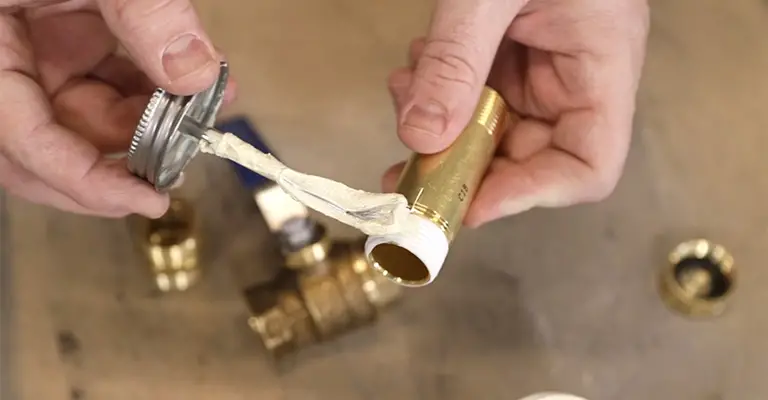
I have outlined a way to save you from going through the lengthy process above.
Use nail polish remover to remove your nail polish. It contains acetone for softening pipe dope.
To restore a hard pipe joint, you will need to apply nail polish remover to the dope and leave it for a few minutes.
When the dope starts to soften, you can easily wipe it up with a rag.
Using Heat
An old pipe joint may have a hardened threading compound that refuses to remove. In addition to the previous methods, you can use heat to remove pipe dope if you don’t find the previous methods useful. This is how you do it.
Make sure the pipes’ ends are heated with a blow torch. The hardened material will quickly come off as soon as the pipe dope is heated.
However, it is important to remember that you should not use this method on gas lines. It is only recommended to use this process for water lines or waste lines.
2. Remove Pipe Dopes from Clothes
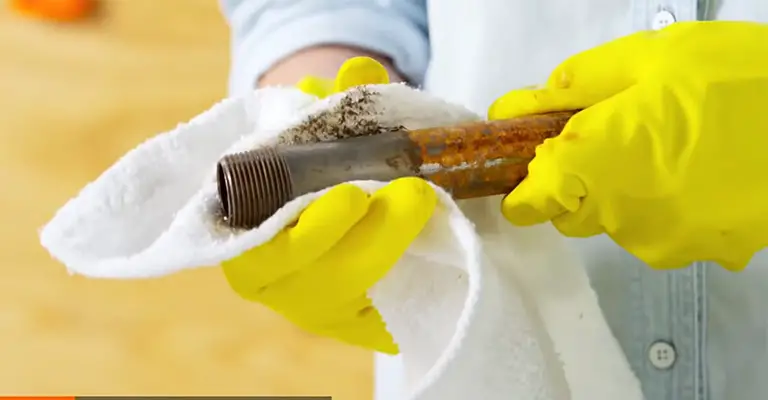
If you do your own home repairs, you might get pipe dope on your clothes. It is only a matter of time before you make a big mess trying to remove them from your clothes if you don’t know how to do it.
Applying Bleach
It will not harm your clothing if you use bleach to wash it after you’ve been exposed to pipe dope stains. To remove a stubborn stain, add some bleach to your wash machine.
Using Nail Polish Remover
We followed a certain procedure when removing pipe dope from joints, right? Similarly, you can wash your clothes using the same method but slightly differently.
You can remove nail polish by soaking a clean cloth in nail polish remover.
Ensure that the soaked cloth is applied to the stained part of your cloth.
You will need to soak the stained cloth in nail polish remover if the stain is hard. Do this for a short period, however.
It is essential to wash the cloth regularly after the stain is removed.
Using Brake Cleaner
Using brake cleaner on the stain if you still see greasiness after applying the previous methods may help.
3. Remove Pipe Dope from Hands
The best way to remove pipe dope from clothes might already be familiar to you, which is by using nail polish remover, brake cleaner, or combining the two.
Things to Consider When Removing Pipe Dope
You can simplify the removal process by following these tips.
- If a fault joint needs pipe dope replaced, make sure all nearby joints are leak-free as well.
- Thread sealant can be easily removed with razor blades by tearing it or cutting it.
- When dealing with pipe dope, you should not use heat unless you have a very stubborn case.
Final Words
After a while, the soft threading compound you apply to pipe joints becomes hard and unworkable. If you need to remove the glue, make sure you follow professional instructions to avoid damaging the supply line or joint.
Rather than showing you how to remove pipe dope yourself, we tried to show you how to do it yourself. According to your circumstances, you can follow whichever method you find most appropriate.
Dope remnants left on your clothes and skin should be washed off after removing them from pipe ends. You’ll be able to repair your home more effectively and with less mess by following our helpful guide.






